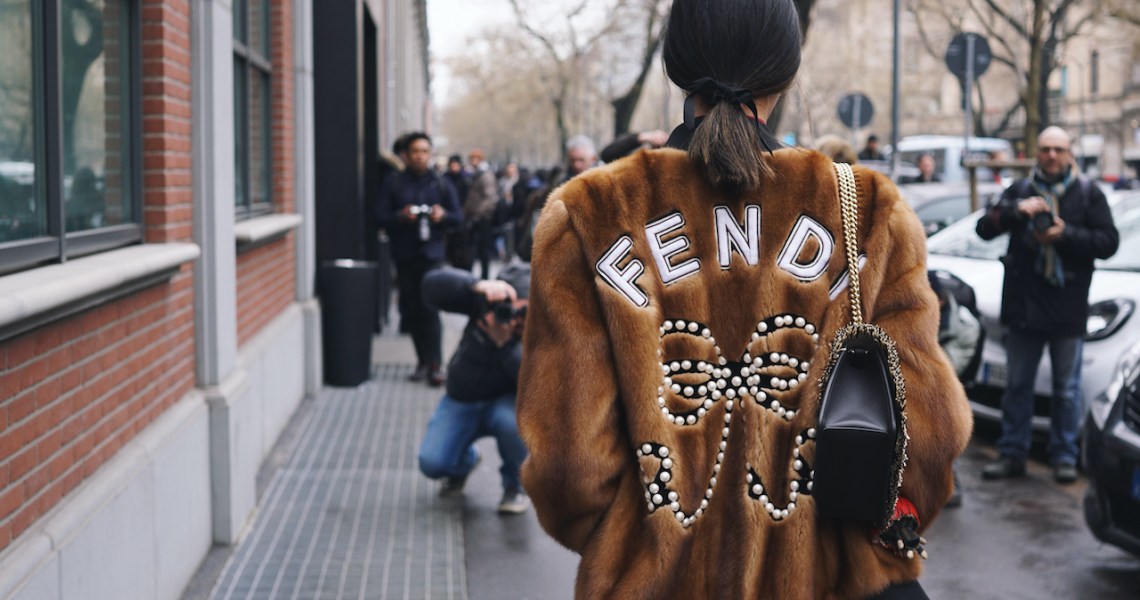Join the conversation! Scroll down to use Glossy+ Comments, giving the Glossy+ community the opportunity to join meaningful discussions around timely industry topics. Our editors and reporters are discussing this report now.
The biggest topic in fashion, and possibly all of retail, is inflation. While not exactly sexy, it’s so top-of-mind for the industry that at Milan Fashion Week, two different brands – Moschino and Diesel – worked inflation-based puns into their collections with actual inflatable clothes and set dressings.
Inflation is likely not yet at its peak and the Federal Reserve will continue to hike rates to get it under control. There’s been lots of talk about how brands are reacting to inflation. We’ve written about how brands are communicating price hikes, how supply chain issues are impacting material prices and more. But what do real consumers think about how the economic landscape is changing?
“I’ve been buying less and looking for more staples from budget retailers like Nordstrom Rack rather than shopping trends,” said Molly Ploughman, a 30-year-old workplace coordinator at a data tech firm in Denver.
The move towards off-price, discount and clearance retailers is confirmed by the data. Ghost, a new platform that connects brands with off-price retailers like TJ Maxx and Ross, saw transactions increase by 375% in the last two months. While brands often wince at the idea of selling off-price, that’s where customers’ attention is.
Other shoppers are being more thoughtful about their purchases, even if it means spending more.
“I’m buying less often but focusing on pieces that are of higher quality. Even if they’re more expensive, I know they’ll last me a long time,” said Rebecca Russo, a 19-year-old college student at Western University in London, Ontario. Russo was also a former Glossy intern. “I think about each purchase more and for a longer time before I buy it. I find myself doing a lot more window shopping. Will I still want to wear this a year from now?”
Ad position: web_incontent_pos1
Shoppers are getting more selective with what they buy, and brands are certainly aware of this.
“Historical data shows that when inflation goes up spending – especially discretionary spending – goes down,” said Aaron Luo, founder of the bag and accessories brand Caraa. Caraa’s travel bags are in the $250 range and are targeting a slightly more affluent than the average consumer. “We have found that the majority of our customer base for Caraa, however, are still interested in purchasing smaller everyday items that are important to them while choosing to rent for larger purchases. Because of this, we believe customers will continue to purchase from brands like ours, however, they will be much more thoughtful and selective with their ordering.”
Maya Kosoff, director of content at the New York venture capital firm Company Ventures, said she’s been buying, selling and trading pages on Instagram. For example, she’s a member of an Instagram community dedicated to trading and reselling clothing by the designer Elizabeth Suzann.
“I’ve also started leaning on resale websites more since the height of the pandemic than I ever had before and shifting away from fast fashion. [Fast fashion] had been a lifeline for me when I was dressing to go into the office every day,” Kosoff said. “The pandemic felt like an opportunity to reset those habits and think critically about my wardrobe and how I interact with fashion and clothes. This is context to say that I have been continuing to build on those habits as inflation hits, leaning on sites like Poshmark to both sell clothes, a newer habit for me, and buy new used clothing.”
Kosoff also said she’s back in the office full time now so a rental service like Nuuly may end up being the best cost-saving option, rather than restocking her wardrobe with clothing from Madewell or Gap. Rental services like Nuuly and Rent the Runway have been surprisingly resilient in 2022, owing to the fact that they can monetize the same item of clothing multiple times and are safe from some of the supply chain constraints affecting other brands.
Ad position: web_incontent_pos2
Despite price increases, overall retail sales remain high thanks, in part, to continued spending. But the way that consumers are spending is changing.
“My own shopping has definitely been reeled in,” said Joey Keefer, 38, designer of his namesake menswear brand JKeefer. Keefer said from the brand side, he’s seen 15% to 20% reduced order budgets from wholesale partners, but pre-orders on the DTC side of the business have still been healthy.
“I’m shopping Ssense and then secondhand like Grailed, Reversible and Vestaire [Collective,]” he said. “It’s gotten to the point where I’m just incredibly selective about price, need and desirability.”
Inside Our Coverage
Weed, but make it fashion: Cannabis brands use fashion to destigmatize the plant
PFW Briefing: Pop culture’s transformative effects on Paris Fashion Week
LA Fashion Week rebrands with former Fenty exec leading the change
Want to discuss this with our editors and members? Join here, or log in here if you're already a member.


